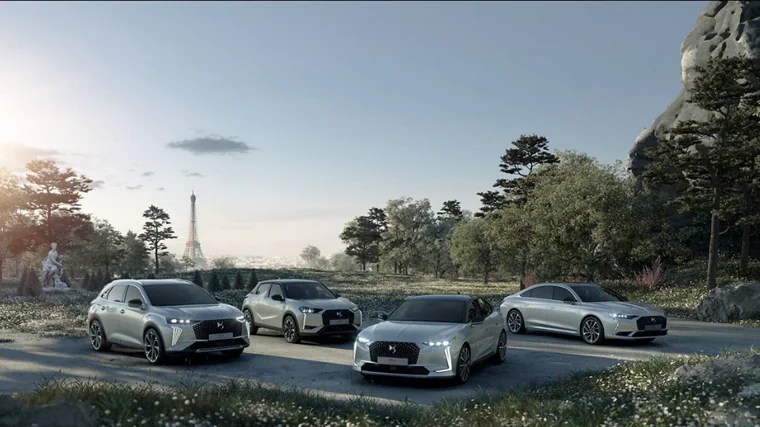The ABB FIA Formula E Championship is a demanding and very open competition, in which the slightest gain in terms of reliability, performance and speed can make the difference and make or break victory. A sporting discipline in which DS Performance can boast of being one of the most successful brands, with two world titles for drivers and manufacturers.
At first glance, the spectacular single-seaters that compete on circuits around the world do not seem to have much to do with an SUV like the DS 3 or DS 7 or with a high-end sedan like the DS 4 or DS 9. But, As often happens in life, what is essential is invisible to the eye. And the essential thing is the work behind the performance of a competition vehicle like the DS E-TENSE FE 23 Gen 3, the fruits of which end up reaching the brand's premium cars within a period of between 5 and 8 years.
Since its origins, the energy transition has been one of the main areas of work for DS Automobiles. An ambitious line of research has borne fruit in several concept cars and, since 2015, in the brand's participation in Formula E, the most important electric single-seater competition in the world in which DS Performance has won. two drivers' and constructors' titles and, above all, it has served as an ideal ground to develop innovations that improve the performance and efficiency of electrified vehicles.
This work is key in the development of DS Automobiles' electrification strategy. Milestones such as the 404 km of autonomy in the WLTP cycle of the DS 3 E-TENSE, 100% electric or the combination of 360 HP and all-wheel drive with a consumption of 1 l/100 km, emissions of 22 grams of CO2 per kilometer and 74 km of “zero emissions” autonomy in the DS 9 E-TENSE plug-in hybrid could not have been achieved without the presence of the Brand in Formula E.
The car with which DS Automobiles fights for victory in the premier category of electric motorsport develops a total power of 800 HP (600 kW) thanks to its two electric motors, one at the front of 250 kW for braking and another at the rear of 350 kW. for propulsion. It can reach a maximum speed of 284 km/h, adapted to the urban circuits in which the ePrix are contested and obtains about 40% of its energy from the regeneration of the battery charge during braking and deceleration. Accelerates from 0 to 100 km/h in 2.3 seconds. In competition as close as Formula E, efficiency is essential. In the engines used in the DS E-TENSE FE 23 Gen 3, 98% has been achieved. Virtually all the load is used. Almost nothing is lost between the battery and the motor.
formula e
FP
To achieve these figures, great steps have had to be taken in the research and development of completely new technologies. Some of them, such as the 600 kW charging station that allows this vehicle to be recharged in just 30 seconds, will be available on the roads in the medium term.
The experience acquired by DS Performance since its first victory in 2016 has allowed it to choose the best alternatives for each of its series models in terms of number of speeds, types of engine, balance between torque and power…

The technology is applied to “street” cars
FP
Although the components of a single-seater and a production car are different, their architecture and design process are absolutely the same and Formula E remains one step ahead to contribute to the development of the DS Automobiles E-TENSE range.
A technology transfer that goes hand in hand with the selection of the best architecture. The strength of the DS PENSKE team lies in having created one of the best energy management software of all the Formula E teams. If the engine and the electronic inverter are the central components of the system, the difference compared to its rivals is in the software that manages them. These solutions, continually developed throughout the sporting season, offer an experience fully applicable to energy management in production cars, whether 100% electric or plug-in hybrids.
#Formula #great #test #bed #automobile #electrification
